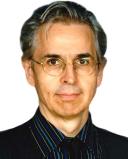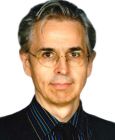Anxiety
Havana Syndrome Study Finds No Foul Play
No evidence found of mystery weapon in Havana Syndrome.
Updated March 26, 2024 Reviewed by Tyler Woods
Key points
- Researchers using advanced neuroimaging find no evidence of brain damage in victims of Havana Syndrome.
- Many victims met the criteria for functional neurological disorders that were likely brought on by stress.
- Investigators found no evidence of a sonic or microwave weapon—only conventional health issues.
The most comprehensive study ever conducted on Havana Syndrome patients found no evidence of secret weapons or foreign conspiracies for the health complaints that plagued American Embassy staff in Cuba starting in late 2016, according to a study published this month in the Journal of the American Medical Association or JAMA and a report from the National Institutes of Health.
The study, by Chan et al., used advanced imaging techniques to examine the brains of victims. The NIH report mirrored the recent conclusions of several U.S. intelligence agencies, which found that pre-existing health conditions, environmental factors, and conventional illnesses were able to explain the episode. Two earlier studies published in JAMA, in 2018 and 2019, found evidence of brain injury but lacked adequate control groups. The new study went to great lengths to have a well-matched group of control subjects.
.jpg?itok=T9ScFMHX)
While the researchers found no evidence of a sonic or microwave attack, they noted that it doesn’t prove there wasn’t one. While this may be true, using the same reasoning, they did not find any evidence for the involvement of space aliens, either. During the media briefing, the researchers were careful not to criticize the authors of the first two JAMA studies, which have been the subject of scathing critiques for their lack of adequate control groups and unconventional methodological approaches.
The NIH study is definitive. If the mainstream media continue to portray Havana Syndrome as some ongoing mystery, then shame on them because it tells me they are more interested in clicks and views than conveying accurate, balanced news. They can continue to seek out the rouge scientists and mystery-stokers, but most conventional scientists are likely to see this for what it is—a nothing burger created by bad science, tabloid journalism, and partisan politicians interested in point-scoring. It is to be expected that some scientists, journalists, and politicians who jumped on the microwave attack bandwagon may attempt to save face and grasp at any alternative explanation. They should eat humble pie and just report the facts as they are, not as they want them to be.
In a surprise move, the JAMA editors chose Stanford microbiologist David Relman to write an accompanying editorial on the study. Relman is a controversial figure for previously suggesting that pulsed microwave radiation from a foreign adversary was a likely explanation for the symptoms. Relman has placed great significance on a small number of reports in Havana where the subject claimed that the sound that accompanied their ‘attack’ seemed to come from a single location. The problem with this claim has to do with the subjective nature of human hearing. There is a substantial body of research on ear-witness testimony which demonstrates that human hearing is highly unreliable and subject to error when it comes to determining where a sound may be emanating.
During the NIH press briefing, it was noted that researchers could not study these subjects further, as there were just a handful, and Relman failed to provide them with their names.
Any attempts to try and spin these new findings as inconclusive or to claim that the Havana Syndrome mystery continues is lipstick on a pig. No matter how hard you try to alter its appearance, at the end of the day, it’s still a pig.
References
Bartholomew, R.E., and Baloh, Robert W. (2024). Havana Syndrome: A Post Mortem. International Journal of Social Psychiatry 70(2):402-405.
Bartholomew, R.E. (2024). A 'Havana Syndrome' Investigation in Congress Rests on Politics, Not Science. Scientific American, March 15.
Chan, Leighton et al. Clinical, Biomarker, and Research Tests Among US Government Personnel and Their Family Members Involved in Anomalous Health Incidents. JAMA, 10.1001/jama.2024.2413. 18 Mar. 2024, doi:10.1001/jama.2024.2413
Della Sala, S., & Cubelli, R. (2018). Alleged 'sonic attack' supported by poor neuropsychology. Cortex, 103, 387–388. https://doi.org/10.1016/j.cortex.2018.03.006
Della Sala S., McIntosh R.D., Cubelli R, Kacmarski JA, Miskey HM, Shura RD. Cognitive symptoms in US government personnel in Cuba: the mending is worse than the hole. Cortex. 2018;108:287–8. https://doi.org/10.1016/j.cortex.2018.10.002.
Öhman L. All ears: adults’ and children’s earwitness testimony. Sweden: Department of Psychology, University of Gothenburg; 2013
Pierpaoli, Carlo et al. Neuroimaging Findings in US Government Personnel and Their Family Members Involved in Anomalous Health Incidents. JAMA, 10.1001/jama.2024.2424. 18 Mar. 2024, doi:10.1001/jama.2024.
Ragini, V., Swanson, R., Parker, D., Ismail, A., Shinohara, R., Alappatt, J., Doshi, J., Davatzikos, C., Gallaway, M., Duda, D., Chen, H. I., Kim, J. J., Gur, R. C., Wolf, R. L., Grady, M.S., Hampton, S., Diaz-Arrastia, R., & Smith, D. H. (2019). Neuroimaging findings in US government personnel with possible exposure to directional phenomena in Havana, Cuba. JAMA, 322(4), 336–347. https://doi.org/10.1001/jama.2019.9269
Relman D.A. Neurological Illness and National Security: Lessons to Be Learned. JAMA. Published online March 18, 2024. doi:10.1001/jama.2023.26818
Swanson, R., Hampton, S., Green-McKenzie, J., Diaz-Arrastia, R., Grady, M. S., Verma, R., & Smith, D. (2018). Neurological manifestations among US government personnel reporting directional audible and sensory phenomena in Havana, Cuba. JAMA, 319(11), 1125–1133. https://doi.org/10.1001/jama.2018.1742


